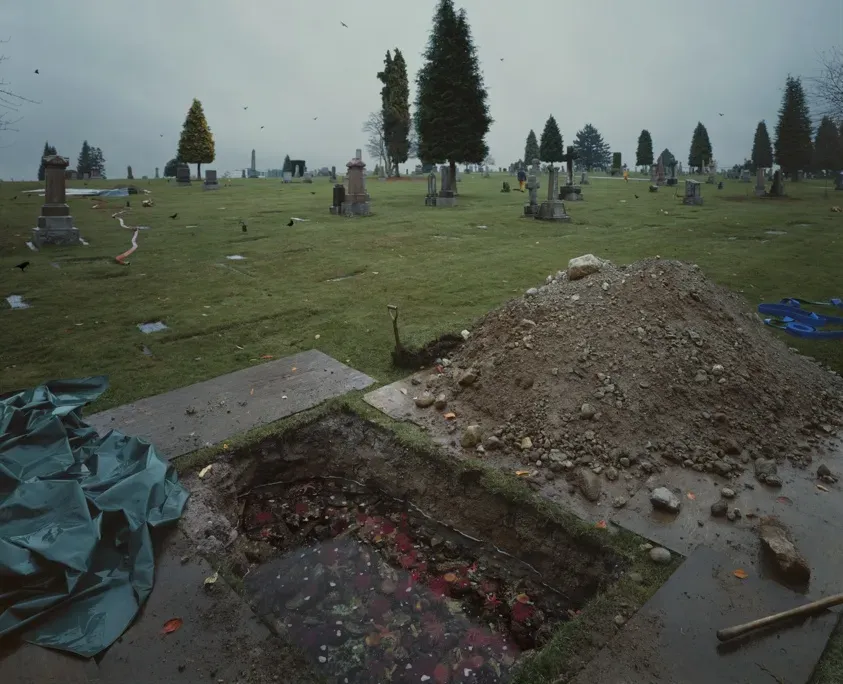Table of Contents
Introduction
Let's be honest. Staring at the same four plain walls day after day can make your bedroom feel less like a sanctuary and more like... well, a box. You want a space that feels personal, maybe a little dramatic, definitely not boring. But gutting the room or hiring a professional feels like too much hassle, too much cash. You've probably scrolled through endless perfect-looking rooms online, wondering how they pulled it off without a construction crew. That's where the magic of a bedroom accent wall comes in. It's a single wall that gets special treatment, giving your room a focal point, personality, and a much-needed dose of style. The good news? You don't need to be a seasoned contractor or possess a secret stash of power tools to create a stunning feature. We're diving into achievable **bedroom accent wall ideas DIY** style. Forget complex blueprints; we're talking paint tricks, simple textures, and creative applications that you can actually do yourself, likely over a weekend. This article cuts through the fluff and gives you concrete steps and realistic options. We'll walk through everything from picking the right wall and color to adding texture and even some clever lighting tricks. Ready to ditch the beige and make a statement? Let's figure out which DIY adventure is right for your walls.
Why a Bedroom Accent Wall Changes Everything
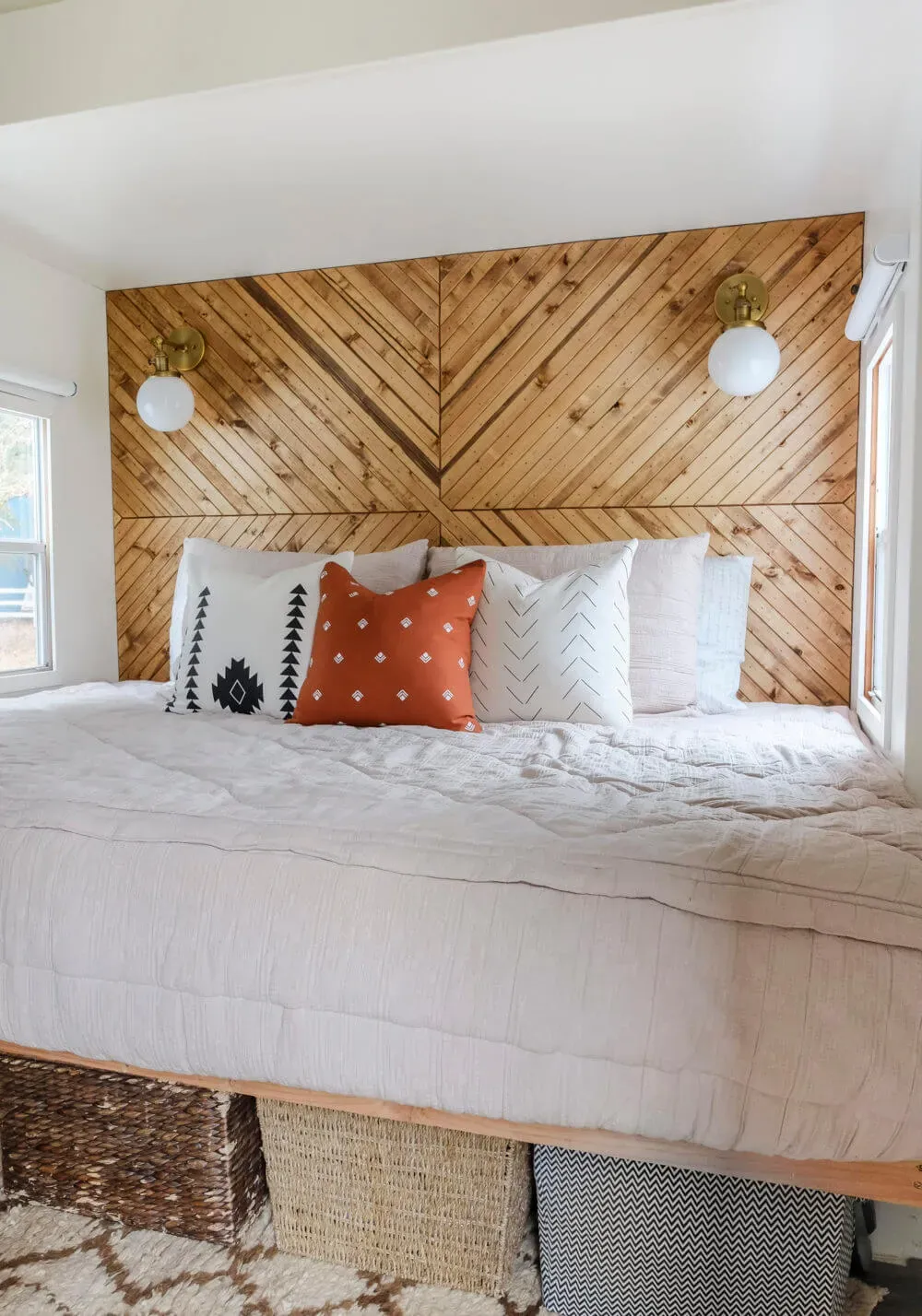
Why a Bedroom Accent Wall Changes Everything
So, you're staring at a blank wall, maybe the one behind your bed, and thinking, "What's the point?" Turns out, giving just one wall some love can completely flip the script on your bedroom's vibe. It's not just about slapping some color up there; it's about creating an anchor, a visual moment that says, "This is where the action is." Without one, a room can feel a bit... floaty, like everything is just sitting there with no real purpose. A well-chosen accent wall grounds the space, drawing your eye and instantly making the room feel more intentional and put-together. That's precisely **Why a Bedroom Accent Wall Changes Everything** – it’s a simple lever pull that redirects the energy of the entire room, making it feel less like a generic box and more like *your* space.
Easy PaintBased Bedroom Accent Wall Ideas DIY
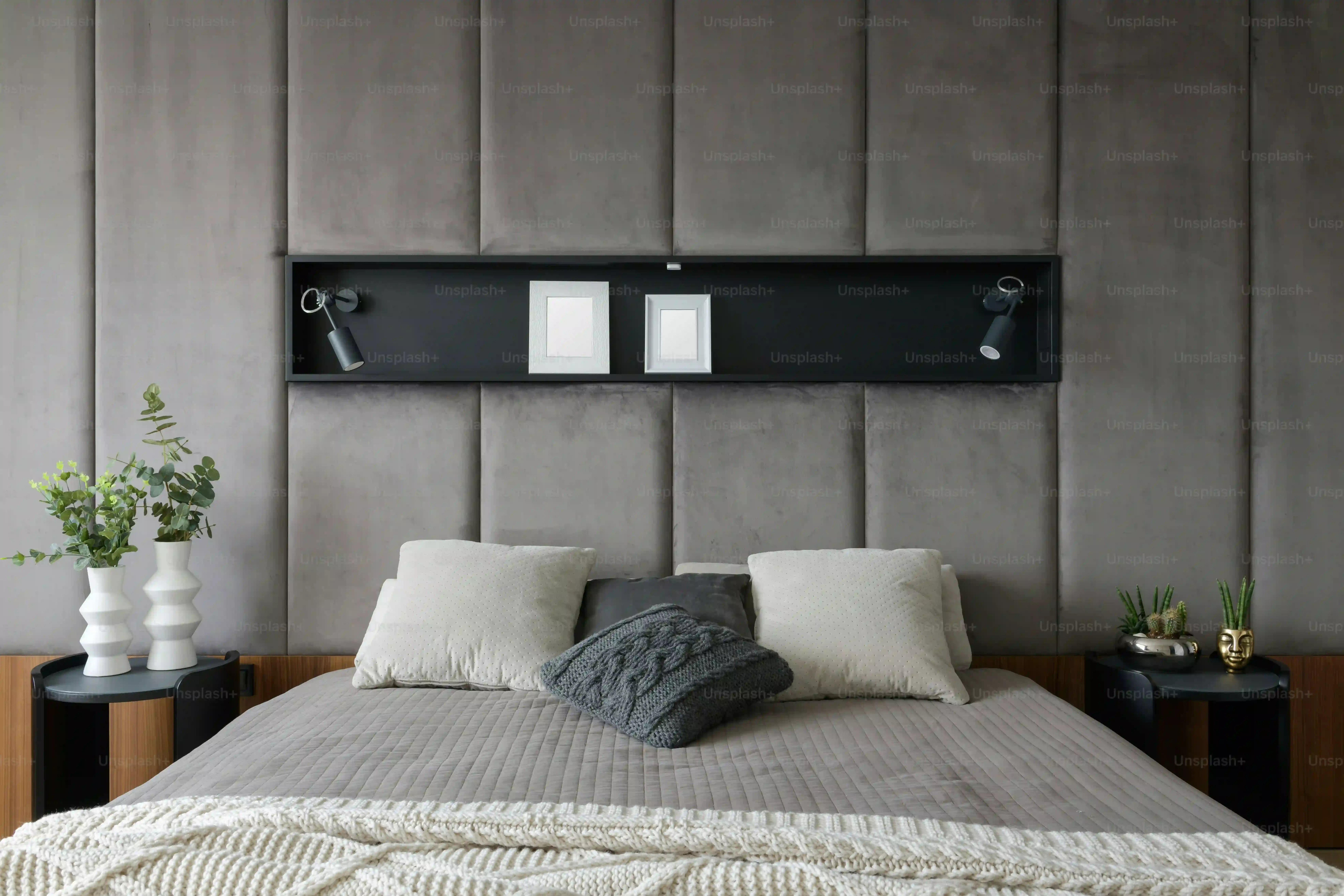
Easy PaintBased Bedroom Accent Wall Ideas DIY
Picking Your Power Color
so you've decided which wall gets the star treatment. Now for the fun part: color. This is probably the most straightforward of the **Easy PaintBased Bedroom Accent Wall Ideas DIY**. A single, bold color on one wall instantly changes the mood. Think deep navy for a cozy, den-like feel, a jewel-toned emerald for sophistication, or a dusty rose for softness. Don't be afraid to go darker or brighter than you might on all four walls. This one wall can handle it. Grab some paint samples first, stick them on the wall, and look at them in different lights throughout the day. What looks great under harsh midday sun might look muddy by lamplight.
Geometric Fun with Painter's Tape
If a solid block of color feels a bit too simple, let's talk tape. Painter's tape is your best friend for creating simple geometric patterns. Stripes are classic – vertical stripes make a ceiling feel higher, horizontal can make a room feel wider. You can also tape off triangles, squares, or even a chevron pattern. The key here is patience with the tape and pulling it off when the paint is *still slightly wet* to get clean lines. Waiting until it's bone dry often results in the paint peeling up with the tape. It's a bit tedious, sure, but the crisp lines you get make the effort worthwhile. This is a fantastic way to get a custom look without needing a steady hand for freehand work, a true win for **Easy PaintBased Bedroom Accent Wall Ideas DIY**. Here are a few basic paint types you might consider:
- Latex Paint: Easy cleanup with water, dries relatively quickly. Most common for interior walls.
- Acrylic Paint: Similar to latex, but often more durable and vibrant.
- Eggshell or Satin Finish: Offers a slight sheen, more durable and washable than flat.
- Flat Finish: Absorbs light, hides imperfections well, but less durable and harder to clean.
Creating Subtle Texture with Paint
Paint doesn't just have to be flat color. You can use techniques to add visual texture. Think about sponging, rag rolling, or even using a special textured paint designed to mimic plaster or suede. These techniques aren't about perfect uniformity; the slight variations are what give the wall depth and interest. It takes a little practice, maybe on a scrap piece of drywall or cardboard first, but it's another layer you can add to your **Easy PaintBased Bedroom Accent Wall Ideas DIY** toolkit. It’s less about precision and more about embracing a slightly imperfect, handcrafted look. This can add a cozy, tactile feel to the wall without committing to actual textured materials.
Adding Dimension: Texture & Materials for DIY Bedroom Accent Walls
Beyond Flat: Introducing Texture Easily
so paint is great, it's the go-to for a reason, but sometimes you want something you can almost *feel*. Adding texture to your **DIY bedroom accent wall** elevates the game from just color to a tactile experience. Think about materials that add visual weight and interest. Peel-and-stick wallpaper has gotten ridiculously good. Forget the flimsy stuff your grandma used; there are incredible patterns, textures mimicking brick, wood, or even fabric, and they are surprisingly forgiving to install. It's peel, stick, smooth. Mess up? Peel it off and try again. It's less commitment than traditional wallpaper and offers a quick, dramatic change. This step instantly makes the wall feel more substantial, pulling it forward visually.
Getting Architectural: Wood and Panels
If you're feeling a bit more ambitious, but still firmly in DIY territory, consider adding wood elements or panels. Shiplap isn't just for farmhouse style anymore; painted a modern color, it gives a clean, coastal, or even minimalist vibe. Board and batten is another classic that's surprisingly simple – essentially adding vertical strips (battens) over horizontal ones (boards, or sometimes just the existing wall) to create a paneled look. These techniques add actual depth and shadow lines, making the wall a significant architectural feature. You'll need a saw (a miter saw makes cuts easy, but a handsaw works), a level, and a nail gun or good old hammer and nails. It requires a bit more measuring and cutting than paint, but the result is impactful and looks custom-built. Here's a quick look at some popular DIY accent wall materials:
- Peel-and-Stick Wallpaper: Wide variety of styles, easy to apply and remove.
- Wood Planks (Shiplap, Reclaimed Wood): Adds warmth, texture, and character. Requires cutting and fastening.
- Molding/Trim (Board and Batten): Creates geometric patterns and architectural detail. Involves measuring, cutting, and securing.
- Fabric Panels: Soft texture, good for sound absorption. Can be stapled or glued to boards.
- Textured Paint/Plaster: Creates subtle or dramatic surface variations without separate materials.
Thinking Outside the Box: Fabric and Other Surfaces
Don't limit yourself to just paint or wood. Fabric can create a surprisingly luxurious and soft accent wall. You can stretch fabric over frames or even staple it directly to the wall (with some planning!). This adds a unique texture and can even help with acoustics. Other ideas include using salvaged materials like old doors (cut down, of course) or even cork tiles for a functional and interesting surface. The key is to pick a material that complements the overall feel you want for your bedroom and isn't overly complicated for a solo DIYer. It's about adding that unexpected element that makes people look twice and think, "Wow, how'd they do that?" That's the fun of **Adding Dimension: Texture & Materials for DIY Bedroom Accent Walls** – making something unique with your own hands.
Get Creative: Stencils & Murals for Your Bedroom Accent Wall DIY
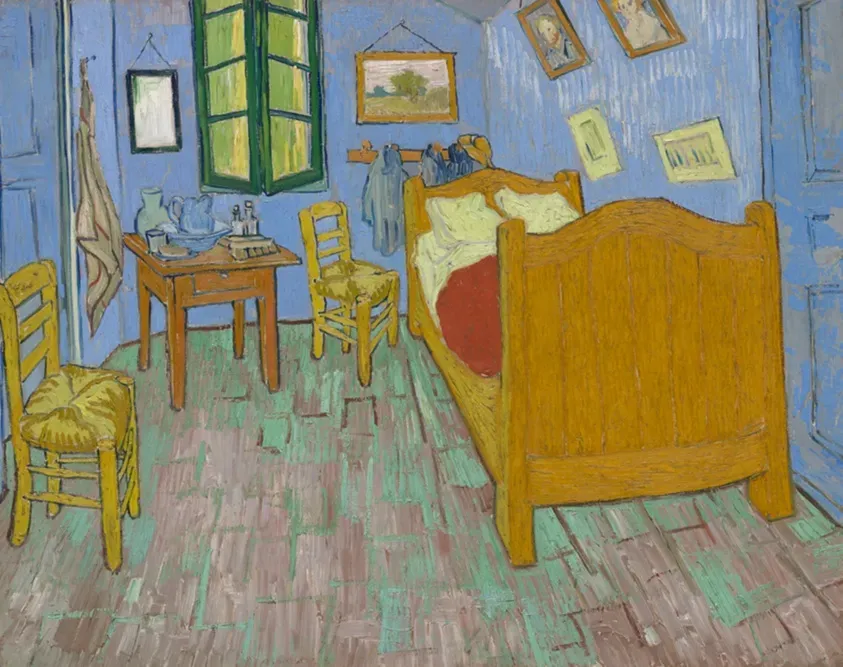
Get Creative: Stencils & Murals for Your Bedroom Accent Wall DIY
Pattern Play with Stencils
so maybe solid color feels too plain, and taping off geometric shapes seems like a geometry homework flashback you'd rather avoid. Enter the wonderful world of stencils. This is where you can really let your personality show on your **bedroom accent wall DIY**. Stencils range from simple repeating patterns – like quatrefoil or floral motifs – to more complex, single-image designs. Using a stencil isn't rocket science, but it does require patience. You apply paint with a brush or roller, making sure not to overload it (that's how you get bleed under the stencil). Hold the stencil firmly or use temporary adhesive spray. It transforms a plain wall into something with depth and visual rhythm without needing an art degree. Think about a subtle metallic pattern over a matte base color for a touch of unexpected glam.
Going Big with Freehand (or Guided) Murals
Feeling a bit bolder? A mural might be your jam. Now, before you picture yourself recreating the Sistine Chapel ceiling, let's scale it back. A mural for your **bedroom accent wall DIY** could be something as simple as large, abstract shapes, a stylized landscape, or even just a few oversized botanical elements. You don't have to be Picasso. Sketch your idea lightly onto the wall with a pencil first. For symmetrical designs or transferring complex images, you can use a projector to trace the outline. This takes the pressure off your freehand skills. It’s about having fun and creating something truly unique to your space. A simple two-tone mountain range or a splashy abstract design can make a huge impact. Here are a few stencil types to consider:
- Single Stencils: Move and reposition for a repeating pattern.
- All-Over Stencils: Cover a larger area, designed to align for seamless patterns.
- Border Stencils: For creating decorative edges or trim effects.
- Large Format Stencils: Designed for bigger motifs or murals.
Combining Techniques for Unique Effects
Who says you have to stick to just one method? The coolest **Get Creative: Stencils & Murals for Your Bedroom Accent Wall DIY** projects often mix and match. Maybe you use a stencil for a base pattern and then freehand add some details or color variations within the shapes. Or perhaps you paint a large, abstract color block and then stencil a delicate pattern on top of it. You could even incorporate elements from the texture section, like using a textured paint within stenciled areas for raised patterns. Don't be afraid to experiment. Start small, maybe in a corner or behind a piece of furniture if you're nervous, and see how different techniques layer together. The goal is a wall that feels personal and reflects your style, not something you saw replicated exactly on social media.
Finishing Touches: Lighting and Decorating Your DIY Accent Wall
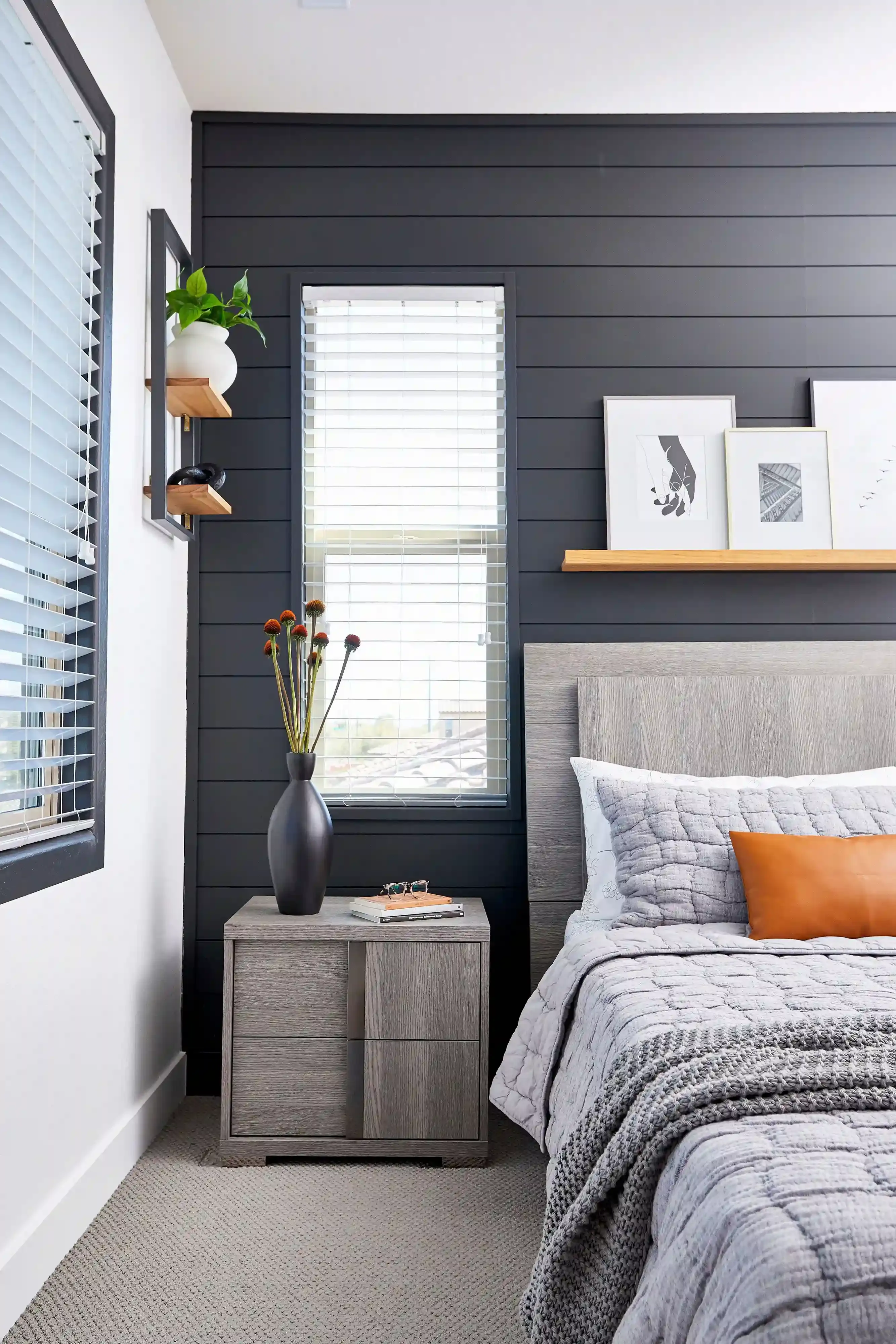
Finishing Touches: Lighting and Decorating Your DIY Accent Wall
Shining a Light on Your Masterpiece
You've put in the work. The paint's dry, the wood's installed, or the stencil is perfect. Now, how do you make sure people actually *see* this amazing **Finishing Touches: Lighting and Decorating Your DIY Accent Wall**? Lighting is crucial. A single overhead light often casts weird shadows and washes out your hard work. Think about targeted lighting. Picture simple track lighting aimed directly at the wall, highlighting texture or color variations. Sconces mounted on either side of the bed, near the accent wall, can frame it nicely and provide ambient light. Even a floor lamp positioned to throw light upwards onto the wall can create drama. Don't underestimate the power of light to make your chosen texture pop or your bold color sing. It's the difference between a wall that's "there" and a wall that demands attention.
Decorating Without Covering It Up
The goal of a **Finishing Touches: Lighting and Decorating Your DIY Accent Wall** isn't to immediately cover it with fifty pictures. You want the wall itself to be part of the decor. When adding art or shelves, be strategic. Don't clutter it. A single, large piece of art can work beautifully, or a carefully curated gallery wall that complements, rather than competes with, the wall's treatment. Floating shelves are great for displaying a few key items – plants, books, small sculptures – without hiding the wall's texture or pattern. The trick is balance. Let the wall breathe. Let it be the star, and use decor as supporting actors, not scene-stealers. It’s like wearing a killer necklace; you don't need ten bracelets and a tiara to go with it. Here are some lighting options to consider for your accent wall:
- Track Lighting: Adjustable heads let you aim light precisely.
- Picture Lights: Small fixtures mounted above artwork or features.
- Wall Sconces: Provide directional or ambient light, can frame the wall.
- Uplighting (Floor Lamps): Casts light upwards, highlighting texture and height.
- LED Strip Lights: Can be hidden along edges for a modern glow.
Your Bedroom, Upgraded: It's Time to Start
So, we've covered everything from a splash of bold paint to adding a bit of texture or even getting fancy with stencils. The point is, turning a plain wall into a focal point in your bedroom doesn't require a construction crew or a trust fund. These bedroom accent wall ideas DIY are genuinely within reach for most people willing to put in a little weekend effort. It’s about choosing a technique that fits your skill level and committing to seeing it through. Stop scrolling through perfect Pinterest boards wishing; pick a wall, grab some supplies, and give it a shot. Worst case? You repaint it. But more likely, you end up with a space that finally feels like *yours*, not just another room.
